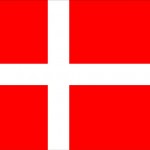 Virtually every primary care doctor in Denmark uses an electronic medical record. Danish health citizens can access their laboratory results, medication profiles, waiting list information, and other information through a digital signature: over 1 million of 5.5 million Danes have done so.
Virtually every primary care doctor in Denmark uses an electronic medical record. Danish health citizens can access their laboratory results, medication profiles, waiting list information, and other information through a digital signature: over 1 million of 5.5 million Danes have done so.
This week, I had the honor of kicking off the online health track at the J. Boye 2010 conference in Aarhus, Denmark. I spent time with an HIT guru from a major Scandinavian university hospital; a member of the Danish public sector HIT organization; marketers from the pharmaceutical industry; an entrepreneur building a portal for the growing private health sector to bring transparency of quality, price and services to a new generation of European health consumers; and a host of European citizens who are finding their way toward health engagement.
As we shared case studies from our countries and health industry segments, two major themes crossed our cultural chasms:
1. Two groups in all of our nations succumb to peer pressure: kids and physicians. While physicians are slow to change, when their peers begin to adopt new technologies that demonstrate value, they come along. Exhibit A for our roundtable was Dr. Geir Tjonnfjord of the Oslo University Hospital who runs a blood clinic and identified an opportunity to better serve his patients with an online information tool. Once he began using the tool, he gathered evidence to show its usefulness and over time, his physician-peers are utilizing health IT in their research and practices. Other stories shared around the table demonstrated this phenomenon: that early adopting physicians of HIT are the Pied Pipers for their peers — once an evidence-base shows ROI and benefits.
2. Patients are central to health care, and to health engagement. Even in health systems that Americans might consider “socialist” or public sector-driven, health managers see the importance of patient engagement to better manage chronic conditions and fend off disease in the first place through wellness and prevention. The Danish system, in fact, offers specific disease management programs which 25% of GPs participate in with inter-disciplinary teams of nurses and remote health monitoring. U.S. physicians will also be interested to learn that the Danish health system pays double the rate of reimbursement for physicians to respond to (secure) e-mailed queries from patients than via telephone.
Learn more about Denmark’s health IT strategy in an issue paper published by The Commonwealth Fund in March 2010, Widespread Adoption of Information Technology in Primary Care Physician Offices in Denmark: A Case Study.
Health Populi’s Hot Points: Developed nations continue to wrestle with aging populations, rising health costs and the desire to adopt technological innovations in health care. There are best practices to learn about in Denmark, in Norway, in Switzerland, in Germany, in the UK, in the U.S., and beyond. The more we share our stories about what works, the more we can learn and adopt these for use in our systems in ways that suit our local cultures.
I tweeted on Monday 1st November: “In London UK health care meetings all day: British & American colleagues arguing whose health system is worse – depends on what we measure!” Dr. Paul Levy picked up my tweet in my Facebook page; he responded on his brilliant blog, Running a Hospital, this week, in a post titled, Convergence: “I predict… the systems will start to look more and more alike over time. Pressure in the US for a more nationally-determined approach. Pressure in Europe for more of a private market approach. It shouldn’t surprise us to see this convergence. After all, the countries are dealing with the same organisms, both biologically and politically.”
The more time I spend working with people in health systems outside of the U.S., I agree more and more with Paul.




 Thank you, Trey Rawles of @Optum, for including me on
Thank you, Trey Rawles of @Optum, for including me on  I was invited to be a Judge for the upcoming
I was invited to be a Judge for the upcoming  For the past 15 years,
For the past 15 years,